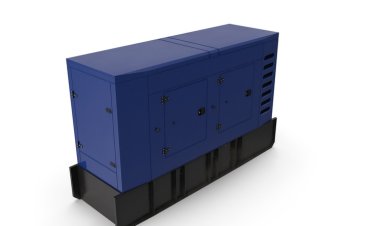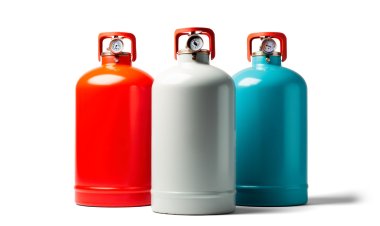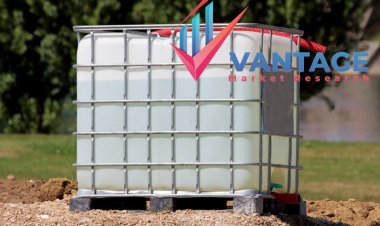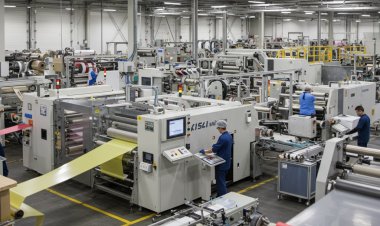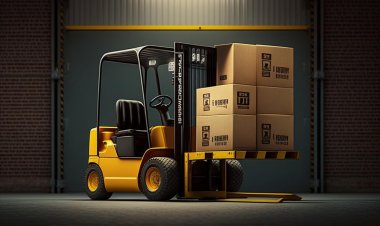Global Flow Battery Market Size to Reach $1283 Million at a CAGR of 21.52% by 2030
Vantage Market Research expects the Flow Battery Market to reach USD 1283 Million by 2030, exhibiting a growth rate (CAGR) of 21.51% during 2024-2030.
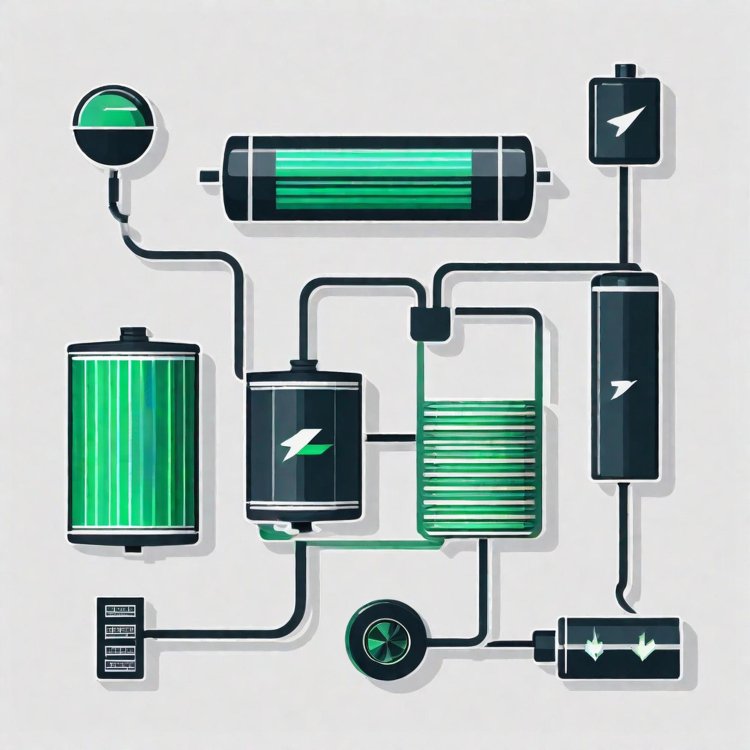
The Global Flow Battery Market size reached USD 270 Million in 2022. Vantage Market Research expects the market to reach USD 1283 Million by 2030, exhibiting a growth rate (CAGR) of 21.51% during 2024-2030.
Table of Contents:
|
|
|
|
|
|
|
|
|
|
|
|
|
|
|
|
|
|
|
|
|
|
|
|
|
|
|
|
|
|
|
|
Introduction
In the ever-evolving landscape of renewable energy, the search for efficient and sustainable energy storage solutions has led to the ascent of flow batteries. Unlike traditional rechargeable batteries, flow batteries utilize liquid electrolytes flowing through electrochemical cells, offering a unique set of advantages. Recently, at the International Flow Battery Forum in Prague, industry leaders boldly proclaimed that flow batteries are cheaper, more reliable, and safer than their lithium-ion counterparts in various stationary energy applications.
Request Sample Report of Flow Battery Market @ https://www.vantagemarketresearch.com/flow-battery-market-2359/request-sample
Top Companies in Global Flow Battery Market
- Sumitomo Electric Industries Ltd. (Japan)
- VRB Energy (Canada)
- Invinity Energy Systems (UK)
- Largo Inc. (Canada)
- Enerox GmbH (Austria)
- Redflow Limited (Australia)
- Stryten Energy (U.S.)
- ViZn Energy Systems (U.S.)
- Lockheed Martin Corporation (U.S.)
- Jenabatteries GmbH (Germany)
- SCHMID Group (Germany)
- Elestor BV (Netherlands)
The Dynamics of Flow Batteries
The distinguishing feature of flow batteries lies in their ability to decouple energy and power ratings. This flexibility increases energy storage capacity by merely adjusting the quantity of electrolytes in the storage tanks. These tanks, often as large as shipping containers, house liquid electrolytes containing metals like vanadium or iron. The electrochemical cells, connected electrically in series or parallel, release electricity as the electrolytes undergo reduction and oxidation processes during charging and discharging.
The Inter-day Sweet Spot
Larry Zulch, CEO of Invinity, highlighted the sweet spot for flow batteries, providing 10 to 36 hours of energy in the interday range. This capability positions flow batteries as ideal for storing excess renewable energy and releasing it during periods of low renewable generation. Predictions suggest that by 2030, flow batteries could be storing a staggering 61 MW h of electricity annually, generating over USD 22 billion in sales.
Commercial Deployments and Achievements
Several companies have successfully implemented and deployed Flow Battery systems worldwide, marking significant achievements in the field. Rongke Power Company in China operates the world's largest 100-MW/400-MWh vanadium Flow Battery system. In the UK, Invinity Energy Systems is set to install a 7-MW/30-MWh vanadium Flow Battery, the largest grid-scale battery manufactured in the country.
ESS, Inc., based in the United States, concluded 2022 with nearly 800 MWh of annual production capacity for its all-iron Flow Battery. China's successful testing and approval of a megawatt iron-chromium Flow Battery further solidify the global presence of Flow Battery technology.
Challenges and Opportunities
While flow batteries offer distinct advantages, challenges exist in scaling up production and ensuring a stable supply chain, particularly for vanadium, a critical component in many flow batteries. The global vanadium market, predominantly supplied by China and Russia, raises concerns about potential supply bottlenecks and rising prices. However, innovative approaches, such as using iron-chromium electrolytes and exploring alternative electrolytes, show promise in mitigating these challenges.
The Stability Advantage
One notable advantage of flow batteries, particularly vanadium flow batteries, is their exceptional stability. These batteries boast lifetimes exceeding 20,000 charge-and-discharge cycles, equivalent to 15–25 years of operation, with minimal performance decline. Lithium-ion batteries, commonly used in stationary applications, experienced a 20% drop in energy storage capacity over several years.
Emerging Technologies and Startups
The Flow Battery sector continues to evolve with ongoing research and development efforts. Startups like Quino Energy, Cellfion, and Sinergy Flow are exploring innovative technologies such as organic flow batteries, redox flow membranes, and multi-day redox flow batteries. These endeavors aim to enhance efficiency, reduce costs, and address challenges associated with traditional Flow Battery technologies.
Navigating Capital Costs
The capital costs of each Flow Battery project vary due to site-specific factors, such as location, plant size and technology, required civil works, and other related factors. According to Viswanathan et al. (2022), a 100-MW vanadium Flow Battery system with 10 hours of energy storage would have an estimated total installed cost of USD 384.5/kWh. For a larger 1,000-MW vanadium Flow Battery system with the same duration of storage, the estimated total cost is USD 365.2/kWh.
Scaling Up for Cost Efficiency
Flow batteries aren't price competitive at small scales, but their per-unit cost of electricity drops as they increase in size. This scalability advantage arises from the ability to enlarge flow batteries by adding more extensive electrolyte tanks and increasing the volume of the electrolyte, which is relatively cost-effective. In contrast, lithium-ion batteries become pricier as they get bigger because they require more cathode material, which is expensive. Flow batteries, particularly vanadium flow batteries, become more cost-competitive with lithium-ion batteries when delivering electricity over more than 4 hours.
Buy Now Our Flow Battery Industry Report @ https://www.vantagemarketresearch.com/buy-now/flow-battery-market-2359/0
The Promise of Stability
One positive attribute of flow batteries is their stability. Vanadium flow batteries have by far the longest lifetimes of all batteries and can perform over 20,000 charge-and-discharge cycles—equivalent to operating for 15–25 years—with minimal performance decline. In contrast, lithium-ion batteries experience a drop in energy storage capacity over time, with a realistic lifespan in stationary applications of about 10,000 cycles or 15 years.
Navigating Supply Chain Challenges
Scaling up the production of vanadium flow batteries presents challenges. Flow-battery makers have yet to adopt industry-wide standards, installation contractors have little experience with flow batteries, and the sector faces potential supply chain problems. Among these issues, supply chain security may present the most significant obstacle. The global production of vanadium is currently about 110,000 metric tons per year, with China producing 62%, and Russia contributing 20%. Most of this material is generated as a by-product of iron refining.
Europe's Role and Alternative Electrolytes
Europe currently has no vanadium production, but companies like Norge Mining plan to mine vanadium-containing phosphate rock deposits in Norway by 2028. However, the specter of rising vanadium prices looms over flow-battery producers, as the metal constitutes about half the cost of a Flow Battery. To address potential supply bottlenecks, alternative electrolytes are in development. Redox One, for instance, is exploring a chromium 2+-3+ anolyte and an iron 2+-3+ catholyte, aiming to make electrolytes more cost-effective.
Innovations in Electrolytes
Cyprus-based Redox One plans to source iron-chromium ore from Tharisa's mine in South Africa, making the electrolyte 10% of the cost of a vanadium electrolyte. Despite the drawback of lower energy density compared to vanadium counterparts, Redox One targets projects with ample space for large electrolyte volumes.
Saudi Aramco's Hybrid Approach
Saudi Aramco is investing a substantial share of its USD 1 billion in alternative energy technologies to develop a hybrid iron-vanadium Flow Battery. This battery features an iron catholyte in one tank and a vanadium anolyte in the other, designed for reliability in hot desert conditions.
Aramco recently tested a 50-kWh version of its battery capable of delivering electricity for up to 16 hours and plans to scale up testing to megawatt levels, aiming for commercial production in 2025.
The Role of Exotic Electrolytes
More exotic electrolytes, including those made with organic compounds, are also in development. California-based Quino Energy, founded to commercialize Harvard University research, is developing an organic electrolyte based on quinones, commonly used as dyes. The company recently raised USD 4.55 million in seed funding to demonstrate its Flow Battery at scale.
Conclusion: The Dawn of Flow Batteries
The momentum gained by flow batteries, despite challenges, suggests that they are on the cusp of widespread commercialization, ushering in a new era of sustainable energy storage. Flow batteries, with their long-duration energy storage, scalability, and potential cost-effectiveness, are poised to play a pivotal role in utility-scale energy storage, microgrids, renewables integration, backup power, and remote/off-grid power applications.
Read Our Latest Press Release: Oilfield Chemicals Market - In-depth Analysis
Contact us
Eric Kunz
6218 Georgia Avenue NW Ste 1 - 564
Washington DC 20011-5125
United States Tel: +1 202 380 9727
Email: [email protected]
Website: Vantage Market Research










